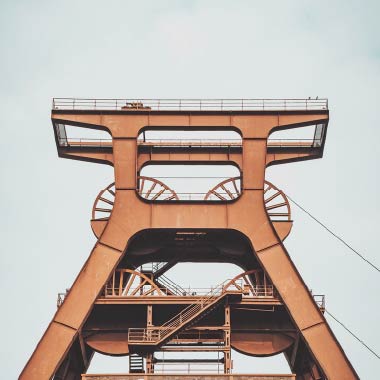Our previous work
in the industry
Over the years we have worked with quite a variety of organisations. What they had in common? The wish to do their work better and smarter. With data, machine learning and AI.
Read below how we helped organisations in the industry!
Read on!keyboard_arrow_rightBack to all projectskeyboard_arrow_right"Supporting operators and experts with AI"

Optimising processes and stimulating sustainability
When thinking about industry and AI, people usually picture robots. But that is definitely not the only form in which AI can be found there. You can also leverage it to better understand (natural) processes or optimize these.
AI could for example help you better utilize your energy or water, so you can not only operate more easily and economically, but also moresustainably.

Industry | Operations Optimisation
Teaching an AI to run a power plant
The same goes for everyone: the longer or more often you do something, the better you get at it. You experience different situations and contexts, and subsequently know how to act on these.
People are quite quick, learning these things with only a few examples. But computers are definitely better at recognizing patterns. Especially if it concerns many variables.
For operating a power plant the same is true. We know quite well what needs to happen when, but could we become even better at managing energy? Could we detect and defer potential anomalies sooner? Could we make our operations more sustainable? And could an AI discover this?
With Digital Twins and Reinforcement Learning
Bingo! Hype word collection complete.
But it ís true. Together with EKu.SIM – who develops Digital Twins for critical infrastructures – we are researching how we can become better at operating power plants by training an AI 'freely' on many simulations. Since in this sector little improvements can already make a big difference!

Industry | Insights | Prediction
Better management of a massive mining operation
RAG, formerly Germany's largest coal mining company, has to pump tonnes of water out of old mineshafts every day. The exact process of which water flows into the mine and when is not well understood. Landscape has built a model using real world data to predict this amount of water months in advance. This also indicates the required amount of pumping,which enables RAG to improve their resource management!
Read all about itkeyboard_arrow_right
Industry | Data Management
Only save the data you really need
Airborne Oil & Gas, a pipeline manufacturer, wanted to equip their factory line with sensors and cameras, to gather data about their production process. This data can be used to model a digital twin, a virtual copy of the factory, and to train AI models to do various tasks.
But before that could happen, they first needed to store vast amounts of data that these sensors would generate. They asked us to determine the needs for storage, what data to acquire and optimize the amount of data stored.
Read all about itkeyboard_arrow_right
Selectical | Literature Research | NLP | Active Learning
Literature research in 1/3 of the time
Researchers doing (systematic) literature reviews need to screen many thousands research papers and select the ones that are relevant to a specific subject. Usually out of these thousands of papers, only a few hundred are actually useful. Making this selection manually takes a lot of useful time and is simply boring.
Without pre-labeled data
Usually we train an AI model using labeled data. Using examples. But that is not possible in this case! The challenge is that since every literature study is different, there are no examples yet. Labeling these examples just so happens to be your job. That doesn't mean that you can't use AI though!
And still use AI
For this we use a technique called Active Learning: this type of AI learns from human input, and can improve itself constantly while working. This way the researcher can start working the same way as usual, but with an AI learning in the background. Once the AI is certain enough that it has identified the right patterns, it will take over the labeling. This way the researcher only has to validate or correct the AI's work. This saves a lot of time!
Read more about Selecticalkeyboard_arrow_rightAsk for a demo!keyboard_arrow_right